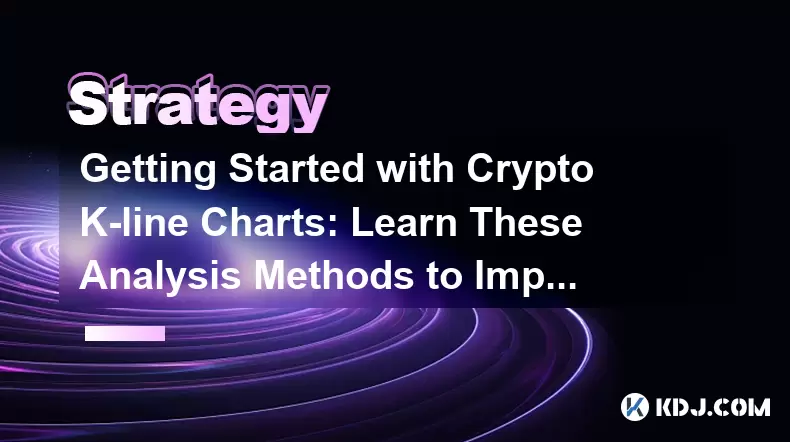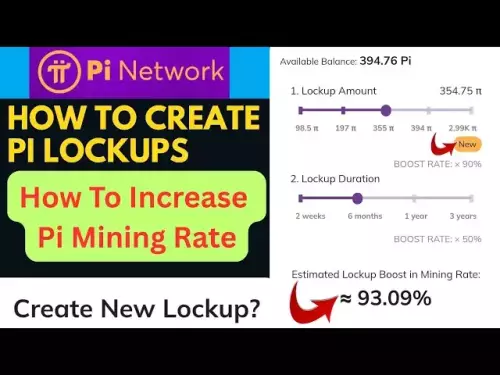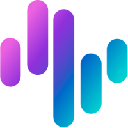-
 bitcoin
bitcoin $114779.865156 USD
2.30% -
 ethereum
ethereum $4226.519789 USD
2.39% -
 tether
tether $1.000545 USD
0.04% -
 xrp
xrp $2.890223 USD
0.92% -
 bnb
bnb $1030.029301 USD
2.95% -
 solana
solana $212.824944 USD
1.69% -
 usd-coin
usd-coin $0.999757 USD
0.01% -
 dogecoin
dogecoin $0.234961 USD
-0.27% -
 tron
tron $0.337174 USD
0.42% -
 cardano
cardano $0.804783 USD
0.09% -
 hyperliquid
hyperliquid $45.748770 USD
-2.85% -
 chainlink
chainlink $21.699170 USD
0.82% -
 ethena-usde
ethena-usde $1.001452 USD
0.08% -
 avalanche
avalanche $30.237800 USD
1.14% -
 stellar
stellar $0.372604 USD
1.52%
Getting Started with Crypto K-line Charts: Learn These Analysis Methods to Improve Your Trading Level
K-line charts visually summarize price movements in crypto trading, showing open, close, high, and low prices with colored candles indicating bullish or bearish trends.
Jun 13, 2025 at 02:29 pm

Understanding the Basics of K-line Charts
K-line charts, also known as candlestick charts, are essential tools in cryptocurrency trading. They provide a visual representation of price movements over specific time intervals. Each K-line represents four key pieces of data: opening price, closing price, highest price, and lowest price within a given period. The body of the candle shows the range between the open and close, while the wicks (or shadows) indicate the high and low.
The color of the candle is crucial for interpretation. A green or white candle means that the closing price was higher than the opening price, indicating a bullish trend. Conversely, a red or black candle signifies a bearish trend, where the closing price was lower than the opening price. Understanding these basic elements allows traders to quickly assess market sentiment at a glance.
Identifying Key Candlestick Patterns
Several well-known candlestick patterns can help traders make informed decisions:
- Bullish Engulfing Pattern: This pattern appears during a downtrend and consists of a small bearish candle followed by a larger bullish candle that completely 'engulfs' the previous one. It suggests a potential reversal to an uptrend.
- Bearish Engulfing Pattern: The opposite of the bullish engulfing, this occurs during an uptrend and signals a possible downturn.
- Hammer and Hanging Man: Both have small bodies with long lower wicks. A hammer appears in a downtrend and indicates buying pressure, while a hanging man appears in an uptrend and may signal a reversal.
- Shooting Star and Inverted Hammer: These candles have small bodies and long upper wicks. A shooting star forms in an uptrend and suggests selling pressure, whereas an inverted hammer appears in a downtrend and may indicate a potential reversal upward.
Recognizing these patterns helps traders anticipate future price movements and adjust their strategies accordingly.
Using Technical Indicators Alongside K-lines
While K-line charts offer valuable insights into price action, combining them with technical indicators enhances analytical accuracy. Popular indicators include:
- Moving Averages (MA): These smooth out price data to identify trends. The 50-day and 200-day moving averages are commonly used to spot long-term trends. When the shorter MA crosses above the longer MA, it’s known as a golden cross, signaling a bullish phase. A death cross, when the shorter MA falls below the longer MA, indicates a bearish trend.
- Relative Strength Index (RSI): RSI measures the speed and change of price movements on a scale from 0 to 100. An RSI above 70 suggests overbought conditions, potentially signaling a price drop. Below 30 indicates oversold conditions, which might mean a rebound.
- Bollinger Bands: These bands consist of a middle moving average line and two outer bands that represent standard deviations. Prices near the upper band suggest strength, while those near the lower band imply weakness. A contraction in the bands often precedes a breakout.
Integrating these indicators with K-line analysis provides a more comprehensive view of market dynamics.
Timeframe Selection and Its Impact on Analysis
Selecting the appropriate timeframe is critical in K-line chart analysis. Short-term traders may focus on 1-minute, 5-minute, or 15-minute charts to capture quick price fluctuations. Medium-term traders typically use 1-hour or 4-hour charts, while long-term investors analyze daily or weekly charts to understand broader trends.
Each timeframe reveals different aspects of market behavior. For instance, a bullish engulfing pattern on a 1-hour chart might be insignificant on a daily chart. Traders must align their strategy with the chosen timeframe to avoid conflicting signals. Additionally, using multiple timeframes—such as checking a daily chart to confirm the trend before executing trades based on hourly charts—can improve decision-making accuracy.
Practical Tips for Reading K-line Charts Effectively
To get the most out of K-line chart analysis, consider the following tips:
- Volume Confirmation: Pay attention to volume bars alongside K-line charts. High volume during a candle's formation increases its significance. For example, a large bullish candle accompanied by high volume reinforces the strength of the move.
- Avoid Overtrading: Not every candle or pattern warrants a trade. Wait for clear setups with strong confirmation from volume and other indicators before entering a position.
- Use Support and Resistance Levels: Draw horizontal lines at key support and resistance levels. K-line patterns forming near these levels carry more weight. A hammer near a strong support level is more reliable than one appearing mid-trend.
- Risk Management: Always set stop-loss orders to limit potential losses. Determine your risk-reward ratio before entering a trade. If a setup offers a reward of $200, ensure your risk doesn’t exceed $100.
These practical approaches help traders filter noise and focus on high-probability opportunities.
Frequently Asked Questions
What should I do if a candlestick pattern gives a false signal?False signals are common in volatile crypto markets. To mitigate this, always wait for additional confirmation such as a follow-through candle or indicator alignment. Avoid making impulsive decisions based solely on one candle.
Can K-line charts be used for all cryptocurrencies?Yes, K-line charts apply universally across all cryptocurrencies. However, some altcoins may exhibit erratic behavior due to low liquidity. Ensure you’re analyzing assets with sufficient trading volume for more reliable signals.
Is it better to rely only on K-line patterns or combine them with other methods?Combining K-line patterns with other technical tools like volume, moving averages, and RSI leads to more robust analysis. Sole reliance on any single method increases the likelihood of errors.
How can I practice reading K-line charts effectively?Use demo accounts or paper trading platforms to simulate trades without risking real money. Review historical charts and try identifying patterns and their outcomes. Many platforms offer replay features to test your recognition skills.
Disclaimer:info@kdj.com
The information provided is not trading advice. kdj.com does not assume any responsibility for any investments made based on the information provided in this article. Cryptocurrencies are highly volatile and it is highly recommended that you invest with caution after thorough research!
If you believe that the content used on this website infringes your copyright, please contact us immediately (info@kdj.com) and we will delete it promptly.
- ChatGPT, Bitcoin, and $HYPER: Riding the Crypto Wave
- 2025-09-30 16:25:14
- Mutuum Finance (MUTM): Riding the DeFi Wave with Crypto Price Prediction
- 2025-09-30 16:25:14
- XRP ETF Approval Odds Soar: Analyst Predicts $33 Price Surge!
- 2025-09-30 16:30:01
- Keel, Solana, and Sky Stablecoin: Fueling the Future of DeFi
- 2025-09-30 16:45:13
- EcoChain, DePIN Infrastructure, and X1Nodes: Powering the Web4 Revolution
- 2025-09-30 16:30:01
- Pi Network's Institutional Momentum: Leading the Web3 Revolution
- 2025-09-30 16:45:13
Related knowledge

Practical parameter settings for a Bitcoin multi-timeframe moving average system
Sep 18,2025 at 10:54pm
Optimizing Timeframe Combinations for Bitcoin Trading1. Selecting appropriate timeframes is crucial when building a multi-timeframe moving average sys...

How can I filter out false breakouts in Dogecoin high-frequency trading?
Sep 22,2025 at 01:00am
Understanding False Breakouts in Dogecoin Trading1. A false breakout occurs when Dogecoin's price appears to move beyond a defined support or resistan...

Techniques for identifying tops and bottoms in the Bitcoin on-chain NVT model
Sep 20,2025 at 07:54pm
Understanding the NVT Model in Bitcoin Analysis1. The Network Value to Transactions (NVT) ratio is often described as the 'P/E ratio' of the cryptocur...

What does the surge in open interest in Bitcoincoin futures mean?
Sep 20,2025 at 11:18pm
Understanding the Surge in Dogecoin Futures Open Interest1. A surge in open interest within Dogecoin futures indicates a growing number of active cont...

How can I use the Ethereum USDT premium to gauge market sentiment?
Sep 18,2025 at 11:55pm
Understanding the Ethereum USDT Premium1. The Ethereum USDT premium refers to the price difference between USDT (Tether) traded on Ethereum-based plat...

What should I do if Ethereum staking yields decline?
Sep 20,2025 at 06:18am
Understanding the Causes Behind Declining Ethereum Staking Yields1. The Ethereum network transitioned to a proof-of-stake consensus mechanism with the...

Practical parameter settings for a Bitcoin multi-timeframe moving average system
Sep 18,2025 at 10:54pm
Optimizing Timeframe Combinations for Bitcoin Trading1. Selecting appropriate timeframes is crucial when building a multi-timeframe moving average sys...

How can I filter out false breakouts in Dogecoin high-frequency trading?
Sep 22,2025 at 01:00am
Understanding False Breakouts in Dogecoin Trading1. A false breakout occurs when Dogecoin's price appears to move beyond a defined support or resistan...

Techniques for identifying tops and bottoms in the Bitcoin on-chain NVT model
Sep 20,2025 at 07:54pm
Understanding the NVT Model in Bitcoin Analysis1. The Network Value to Transactions (NVT) ratio is often described as the 'P/E ratio' of the cryptocur...

What does the surge in open interest in Bitcoincoin futures mean?
Sep 20,2025 at 11:18pm
Understanding the Surge in Dogecoin Futures Open Interest1. A surge in open interest within Dogecoin futures indicates a growing number of active cont...

How can I use the Ethereum USDT premium to gauge market sentiment?
Sep 18,2025 at 11:55pm
Understanding the Ethereum USDT Premium1. The Ethereum USDT premium refers to the price difference between USDT (Tether) traded on Ethereum-based plat...

What should I do if Ethereum staking yields decline?
Sep 20,2025 at 06:18am
Understanding the Causes Behind Declining Ethereum Staking Yields1. The Ethereum network transitioned to a proof-of-stake consensus mechanism with the...
See all articles










































































